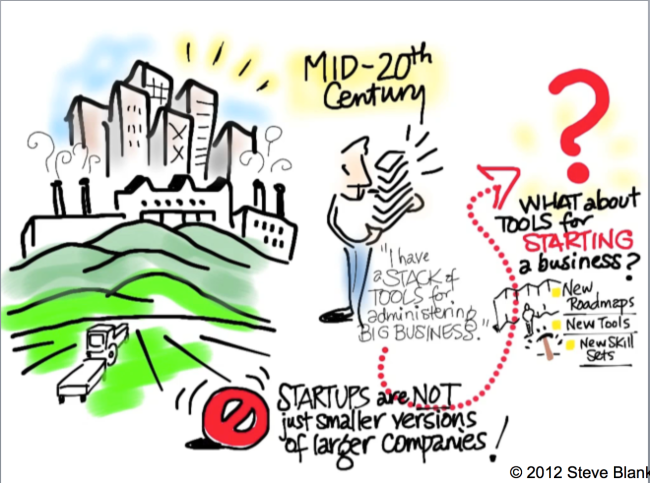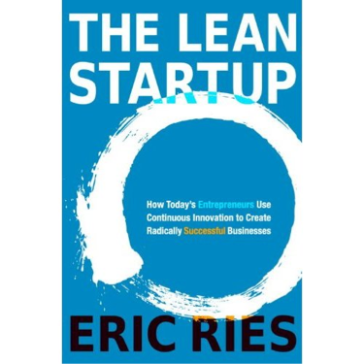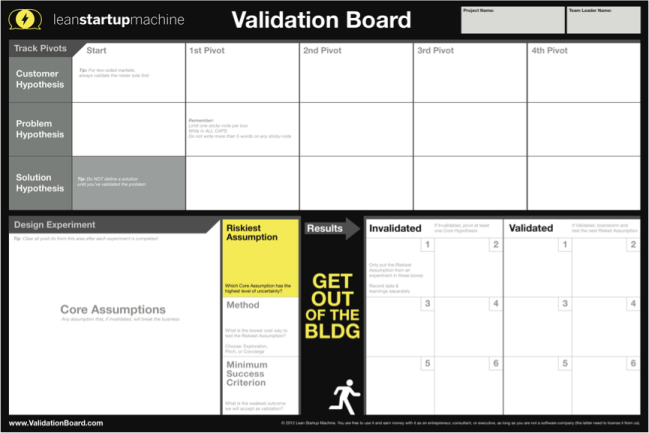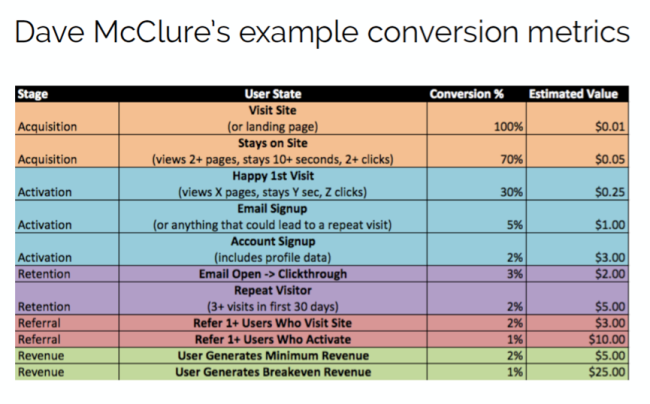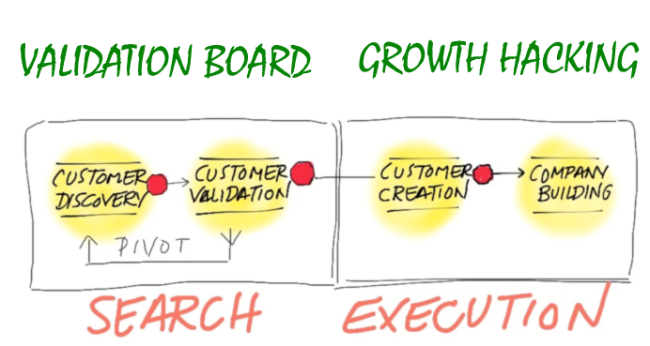You know early on when I started off trying to build innovative startups, the disruptive kind, I had a feel in my stomach something is amiss with the approach then. But when my wiser friends talked about going back to fundamentals we learned at MBA, that did not make much sense either. Of course as all startups from early 2000’s all 3 efforts went down crashing and burning, but of course less spectacularly than those in the valley, because we had less fuel to rise high or burn as you would expect from a startup done in the Philippines at that time. It’s quite a different story today, when it comes to doing startups in Philippines, but that would be another discussion for another day.
When I came across LeanStartup and the pitch of Steve Blank, “Startups are not a smaller version of Larger Companies” it made sense immediately.
I bought both of Steve’s books, watched countless video’s and read several of his blog posts. Learned a lot to say the least specially his use of Business Model Canvas as a planning and tracking tool, it was a genius reuse/repurposing of the strategy tool from Alexander Osterwalder.
The concepts are great, yet I was still having questions in my mind on how to conduct the experiments to de-risk the business model.
At this stage I got introduced to Eric Rice and Ash Maurya (not in person though its hard to differentiate at this age on internet) and their book about LeanStartup and Running Lean. I got some examples of how validation based startups were done by them. Ash came up with this wonderful blog which he scaled into the book and one of the key take away was his mods to the business model canvas, into Lean Canvas, that focused on the problem, solution and key metrics. I learned and tried applying the interview and observing users with the MVP approach, yet, SOMETHING was still MISSING.
Then I came across a talk by Scott Bales on Lean Startup Machine and Validation board. Bang, that hit me like ‘yes, this is it!!’
Validation Board or their further evolved Javelin Board, was like the missing link between concept from the above thinkers and steps to implement it in a more defined way. The concept of getting out of the building became more crystal clear, no so much about the need, that was hammered in by Steve, but what the heck to do, when you are out with potential users.
Concepts of Explorations, Pitching and Concierge to run validation experiments are like the headlight on the foggy avenue of LeanStartup, you know the way in front and more or less the direction, but this provided the ‘how to’ steps.
All of a sudden we had a framework and steps defined on how to apply LeanStartup in a real startup in the ‘fog of war’. There ware no excuse for not implementing it for the early stage startups we were running, other than the warm comforting reality distortion zone we founders love to live in.
We now have a defined path to establish ‘product market fit’, on how and when to ‘Pivot’ or just refine the elements of the canvas. Its all about confirming the PROBLEM is REAL and compelling enough for the CUSTOMER segment to go out of their way to solve it, and that we have identified the best possible SOLUTION viable and feasible for the customer segment.
BUT what about those who already have the product and users, what about them, how will they apply LeanStartup, as it seems Validation board is something they should have used earlier. For them its not so much of a challenge of ‘product market fit’ but how to achieve the hockey stick like growth without spending tons of money.
Then it dawned on me that; actually Validation Board is a tool for SEARCH, not EXECUTION. Looking at the 4 steps from Steve’s original concept, the Customer Discovery and Customer Validation are done very well with the concepts of LeanStartup Machine, including the Pivots, that you can need to go through to reach that critical ‘Product Market Fit’, but next steps require different tools.
Enter GROWTH HACKING!
Growth hacking is a set of tactics and best practices for dealing with user growth, once the product market fit is achieved. It’s a mix of marketing tactics applied through digital technology in scaling users and revenue. Remember Growth Hacking comes after PROBLEM, CUSTOMER and the SOLUTION is clearly established, jumping too early into it is a recipe for disaster.
All things needed to push through the steps top down in a predictable manner to achieve the VIRAL GROWTH every startup founder dreams of.
Things that generally needs refining at this stage are:
- Search Engine Optimization and Content Marketing to drive traffic to the website
- Landing Page Optimization with the right messaging to make the visitor signup
- Proper onboarding to ensure Activation and Retention
- Reminder loops through emails or similar to bring them back
- Incentivizing users to share and invite others
- Revenue Model, ultimately revenue is what will keep you in business
They are not done all together but step by step, to achieve the desired growth.
Below a good metrics from Dave McClure of 500 Startup fame of the above stages and value of an user
To conclude, experimentation, validation and measuring is the fundamental concept of LeanStartup, yet what to experiment on and what to measure at what stage are the real open secrets out there and I hope you can make your learning faster through my experience and like Richard Quest says at CNN, “wherever your travels may take you, I hope it’s profitable”

